Well balanced and nourishing, this Valencian puchero recipe will show you how to make a simple yet hearty Spanish stew that is sure to warm you up on a cold winter’s day.
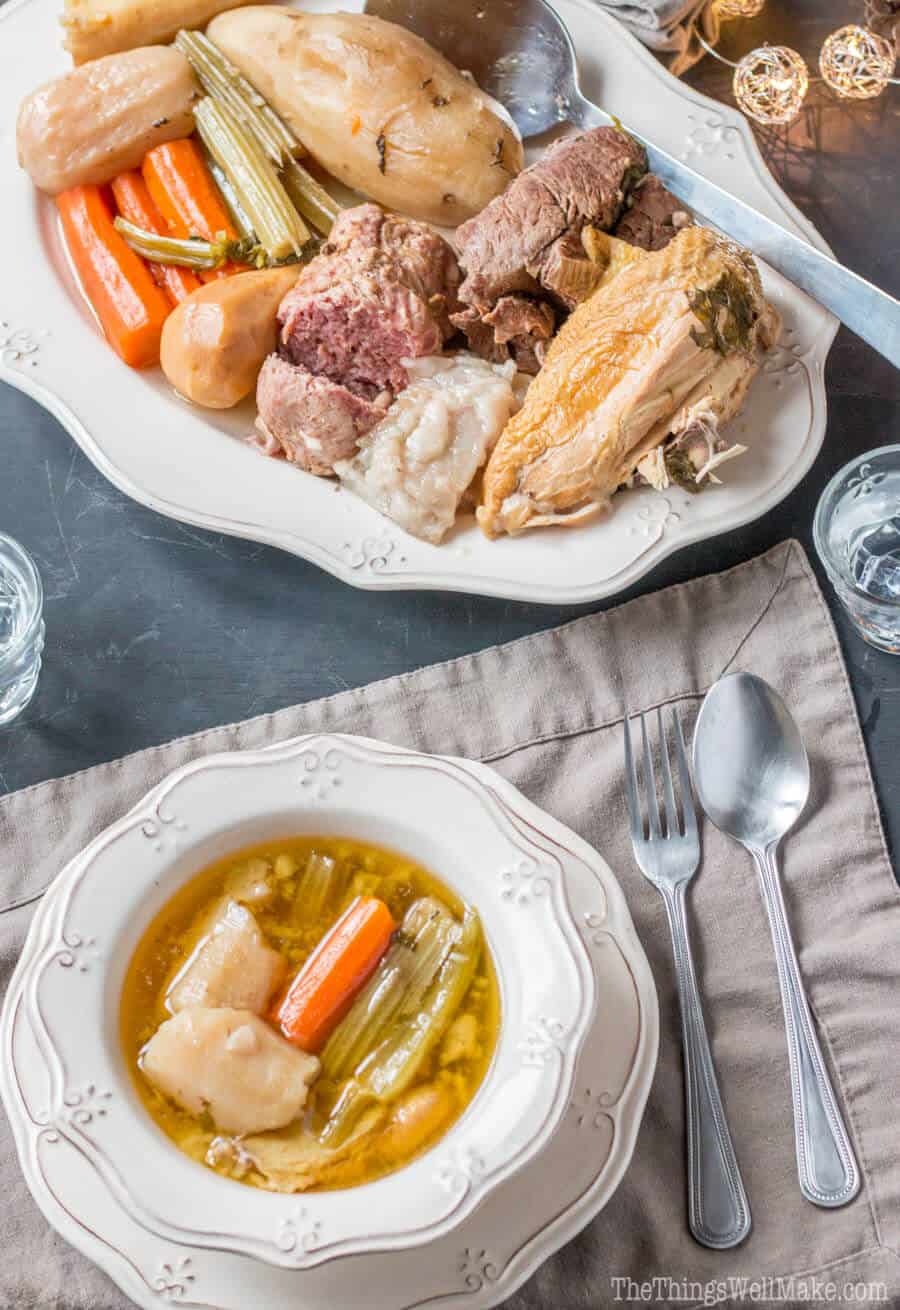
When it comes to healthy Spanish comfort food, puchero is about as good as it gets. Puchero is a type of Spanish stew that varies from region to region and, of course, from house to house.
It is basically a type of “cocido,” which is a stew made from various meats, bones, and vegetables which may also include legumes and potatoes. Where in some regions the focus is on garbanzos and sausages, here in the Valencian community more focus is placed on the variety of meats and vegetables.
A basic puchero consists of broth obtained from a variety of meats and vegetables which is usually served first either alone or with rice or fine pasta noodles as a soup. The broth is followed by a large platter with all of the meat and vegetables which is placed in the center of the table and from which everybody can serve themselves.
It is meant to be a simple yet complete meal that brings the entire family together.
It’s hard to formulate a puchero recipe because it does vary so much. Even in the Valencian Community, puchero can vary from house to house, but you can buy pre-prepared trays of meats and vegetables at most supermarkets marked that they are meant for puchero, which gives you a fairly good idea of what most people use.
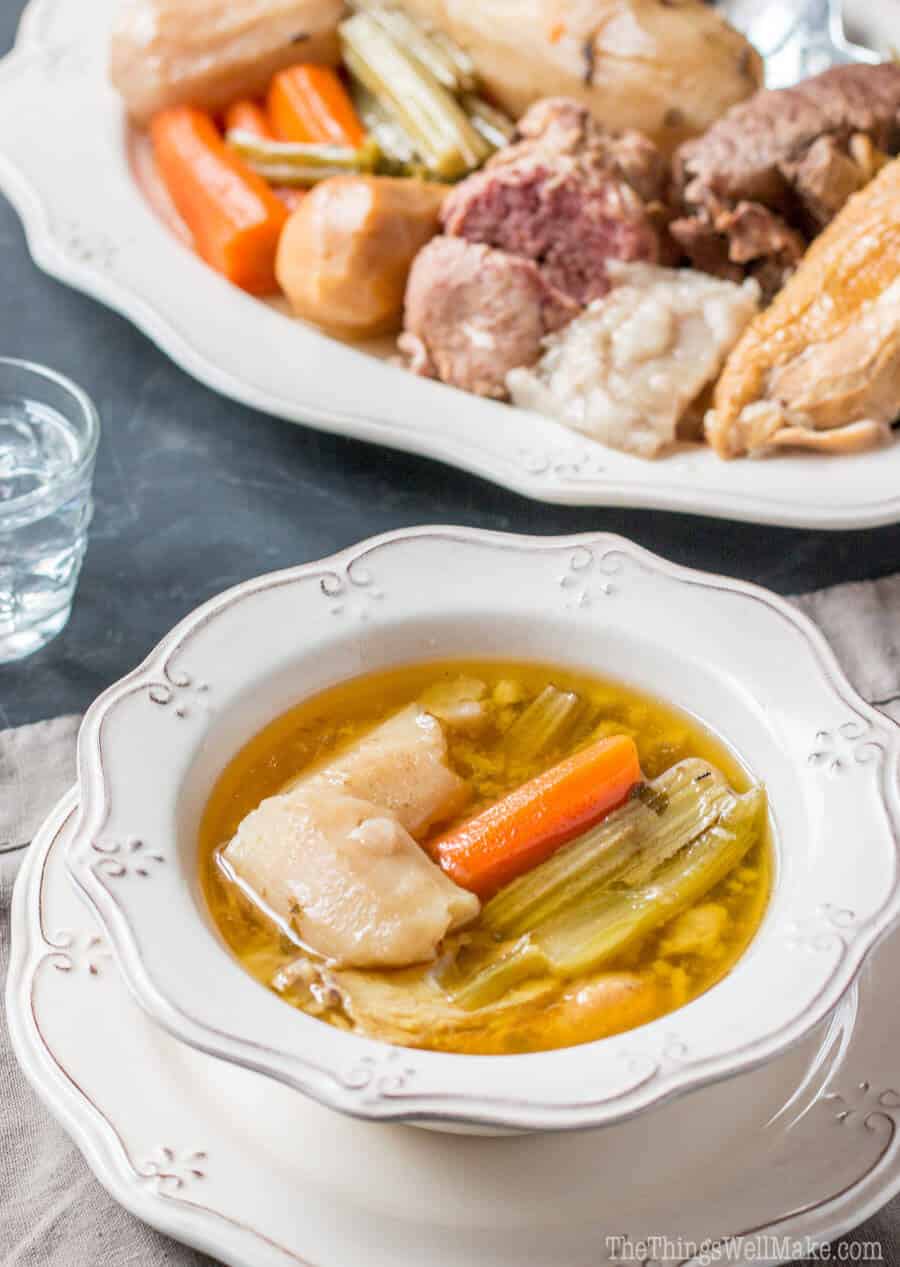
The basic puchero usually uses beef bones (with a bit of meat still attached) mixed with some pork bones, a piece of beef for stewing, a bit of chicken or “hen” meat or both. It is said that hens, after they have finished laying eggs, have a much less tender meat which is perfect for giving flavor to stews like puchero. They also include a square of “tocino” also known as pork fatback, and usually add in a “pilota” or two (or three). The pilota is basically a big, oval meatball, the size of an ostrich egg, made with ground pork; it is cooked along with all of the other meat and vegetables. Here you can buy them premade and ready to cook in your puchero, but you can also easily make your own just as you would any other type of meatballs. I’ll probably eventually share a recipe here on the blog. Some people add in some sausages such as blood sausage, but I don’t.
As for the vegetables, puchero usually uses a mix of green vegetables and root veggies like parsnips, turnips, rutabagas, and carrots. They add in some celery and leeks for flavoring the broth, and some “cardos” or “pencas” which are the tough leaf stalks of the artichoke thistle plant; those are my favorite greens for eating along with the beef. Usually potatoes and boniato are added in, along with some garbanzos, but I usually just use the boniato which I happen to love. That keeps my puchero paleo and just the way I like it! If you can’t find boniato, you can use any type of sweet potato instead!
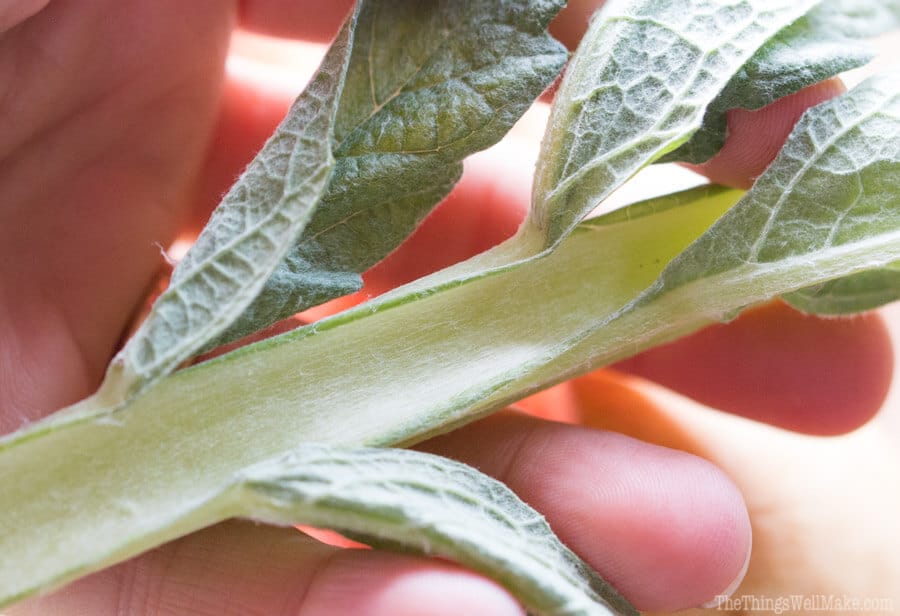
I love making puchero because it is such a hearty, well balanced and nourishing meal. I also love that despite the fact that the idea of “low fat” being healhty has taken force here in Spain, most people aren’t afraid of the fat from the tocino (pork fatback) and they mash it into the potatoes or boniato the way many Americans mash in some butter.
Puchero is a great meal for holiday get togethers, which makes it perfect for Christmas dinner. We usually eat it here on Christmas day accompanied by the leftovers from Christmas Eve.
Another interesting thing to note is that most people make more broth than they will need and save it for making “arroz al horno” afterwards. Those who throw garbanzos into the mix also can save some of those for their rice the next day.
Video

Valencian Puchero Recipe – Winter Spanish Stew
Ingredients
- 1 daikon radish
- 1 rutabaga
- 1 turnip
- 2 carrots
- 2 stalks celery
- 1 bunch artichoke thistle leaf (also known as cardoons)
- 2 large beef bones
- 2 medium boniatos
- 1/4 chicken either breast and wing or hind quarter
- 1 lb stewing beef in one large piece
- 1 square pork fatback aka. tocino
- 1 pilota use any meatball recipe of your choice
- 1 pinch saffron for coloring and flavor
- garbanzos pre-soaked overnight (optional, traditional, non paleo addition)
Instructions
- Prepare your vegetables by peeling the radish, turnip, rutabaga, carrots, and boniatos and placing them in a pressure cooker along with the bones, meats and other cleaned vegetables. If you don’t have a pressure cooker, you can also make this is a large pot on the stove or in a slow cooker. Obviously both methods will take longer than the pressure cooker method. I’ve successfully made puchero using all 3 methods, though.
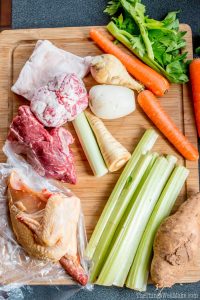
- Fill the pot with water, fully covering all of the meat and vegetables, and close the pressure cooker.
- Cook for around 45 minutes to an hour. On my pressure cooker I use the legumes/tendons setting. Sometimes, though, if I’m using a large piece of beef, that isn’t a long enough setting to make the beef tender so I’ve often had to cook the beef for a little longer in a separate pot. (I usually make puchero in the early morning, so it’s ready for a hearty lunch.) If making puchero on the stovetop, cook for several hours until the meat and vegetables are tender. In the slow cooker, cook for 6-8 hours, depending on your cooker and the setting used.
- Place the bones, meats, and vegetables on a large platter and serve it in the center of the table so that people can take what they like form the platter and eat it in their soup.
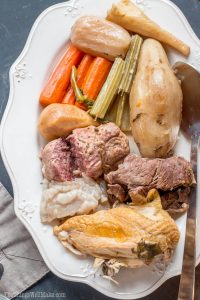
- Strain out the broth and serve in bowls. You can serve as is, or you can make a rice dish with the broth.
- My son likes it when I make rice with the broth. To do so, bring the broth to a boil. Once boiling, add in some rice and cook for around 15-20 minutes, until the rice is fully cooked. Serve immediately. (Many people also use thin pasta noodles instead of the rice.)
- Whether you make rice or not, serve the soup to each person, leaving the big platter of meats and vegetables in the center of the table. Some people like to place meat and vegetables into their soup or rice, others prefer to eat the soup first and then eat the meat and vegetables. Either way, this is a wonderful meal for a cold, winter day!

 Español
Español
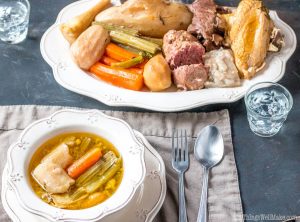
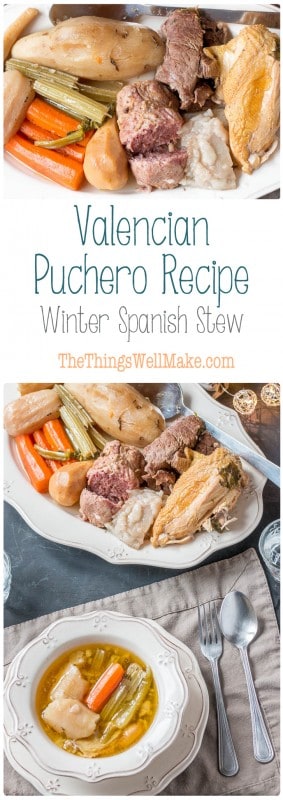
 Spanish Creamy Seafood Salad: Ensaladilla de Marisco
Spanish Creamy Seafood Salad: Ensaladilla de Marisco
Gabriel Magallan
I think it is a tipical argentina’s food…but no. It is universal. wherever you go …here is
Claudia
Darn! I thought puchero was a traditional Uruguayan food. I see it is not, but its so delicious and cozy on a chilly day. Im going to make some today. My grandparents would serve the meat with mustard(yum) especially the leftovers ,cold. Do you that also?
Tracy Ariza
Hi Claudia,
Well, I’ve found while working on this blog that many popular dishes have often become traditional to more than one country- and in some cases, they don’t even know for sure where the true origin is. 😉
When I studied things like the origin of baklava, or even the origin of Castile soap, I’ve seen that people continue to argue about the true origin.
So, perhaps it is also a traditional Uruguayan food- and, honestly, who really cares where it came from first, right? I’m sure each country provides its own wonderful take on it. That’s what’s important, right? 🙂
No, here I’ve never seen leftovers served with mustard. I have to admit that I’m not much of a mustard fan, so I guess that’s better for me.
I have seen a lot of people here make croquetas out of the leftovers, though. They mix together the meat and veggies and form the croquettes and fry them. I honestly am boring and just reheat and eat them the same way. Ha!
Lee
Interesting, my Spanish (Cádiz) mother in law always cuts the veg and it’s in the soup and then the meat and fat are separate which we smash bits with bread, they call that “pringa”
Fredro
Nice post!
Tracy Ariza
Thanks, Fredro!
Krystal
I made this for lunch today and it was absolutely delicious! Enjoyed by all, especially my one year old 🙂 Thanks for another great recipe Tracy!
Alex
Sorry to say this, but why would anyone cook vegetables for 45 minutes, leaving them mushy and destroying all the vitamins inside? The meats must be cooked first and then the vegetables. A soup gets a nice yellow color from cooking the outer dry skin of a large onion, this being also used for naturally dyeing Easter eggs.
Tracy Ariza, DDS
This is a regional recipe and is made in this way. The vegetables in this stew would be very hard if not cooked for a long time. I prefer not eating hard potatoes, sweet potatoes, etc.
If you want to make a “soup” in a different manner, great! But this recipe is for Valencian puchero.